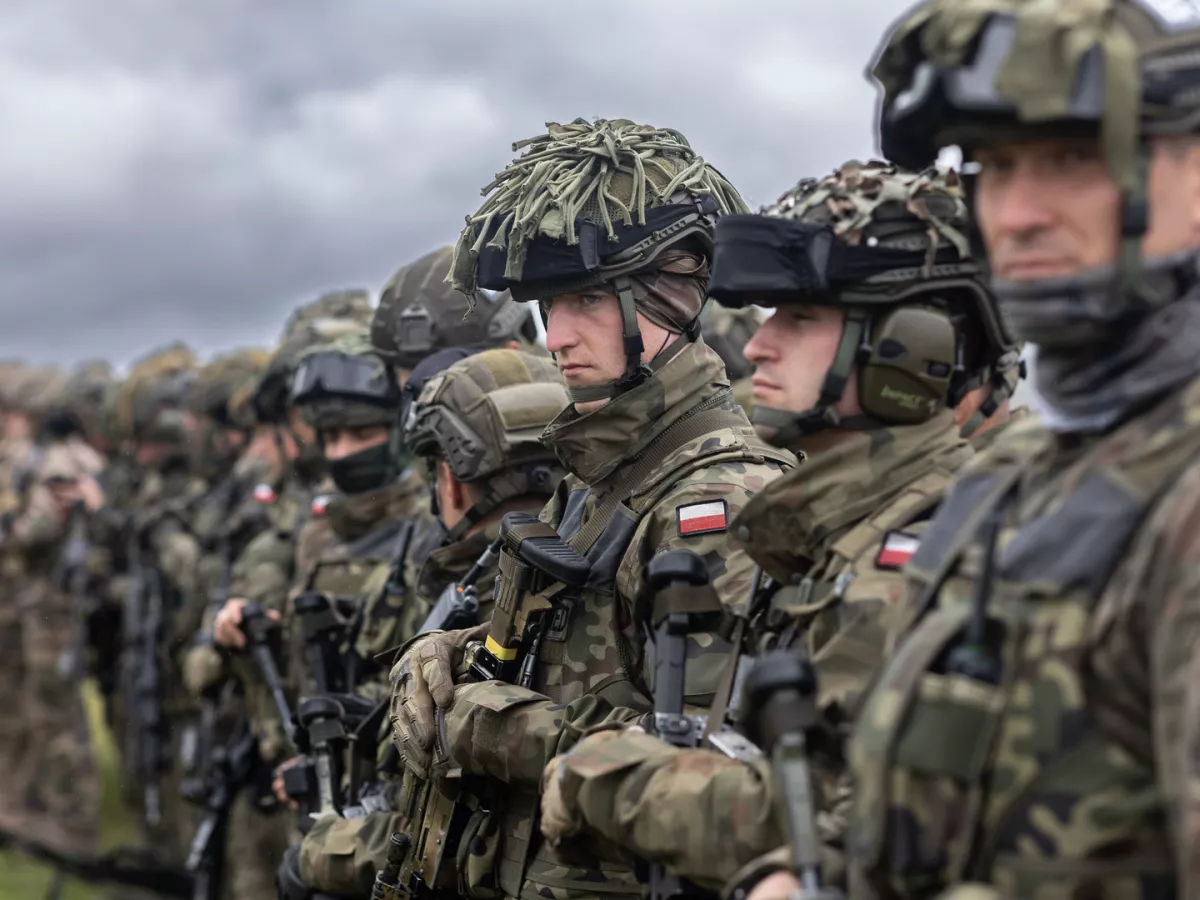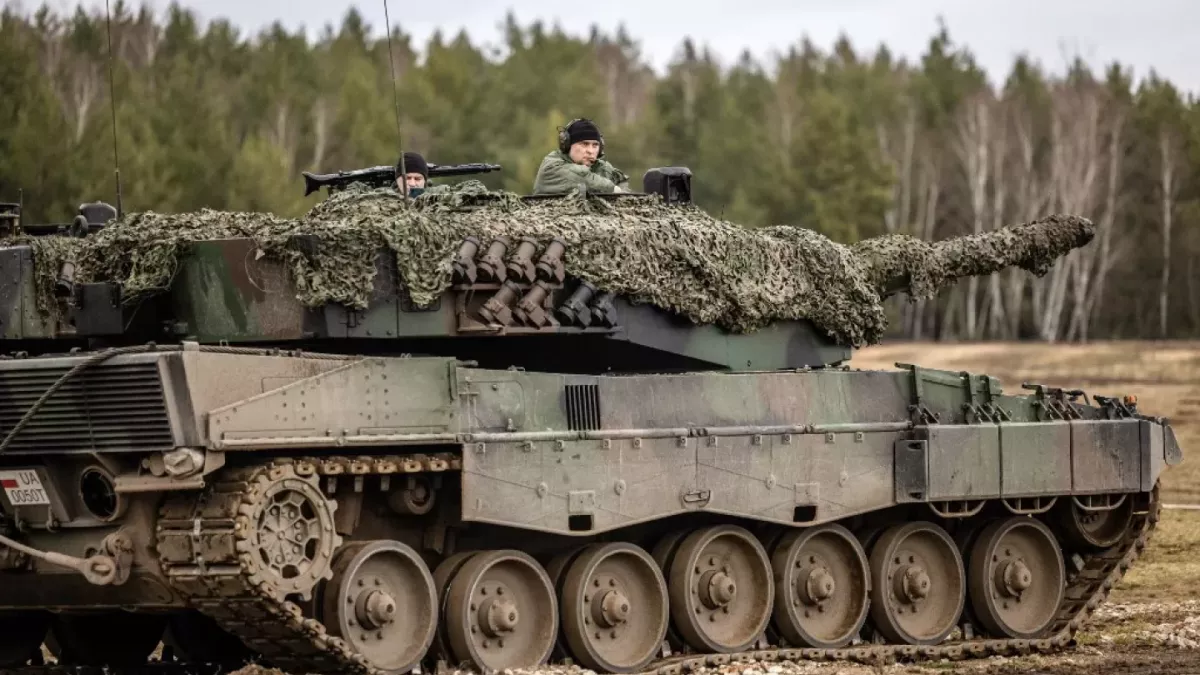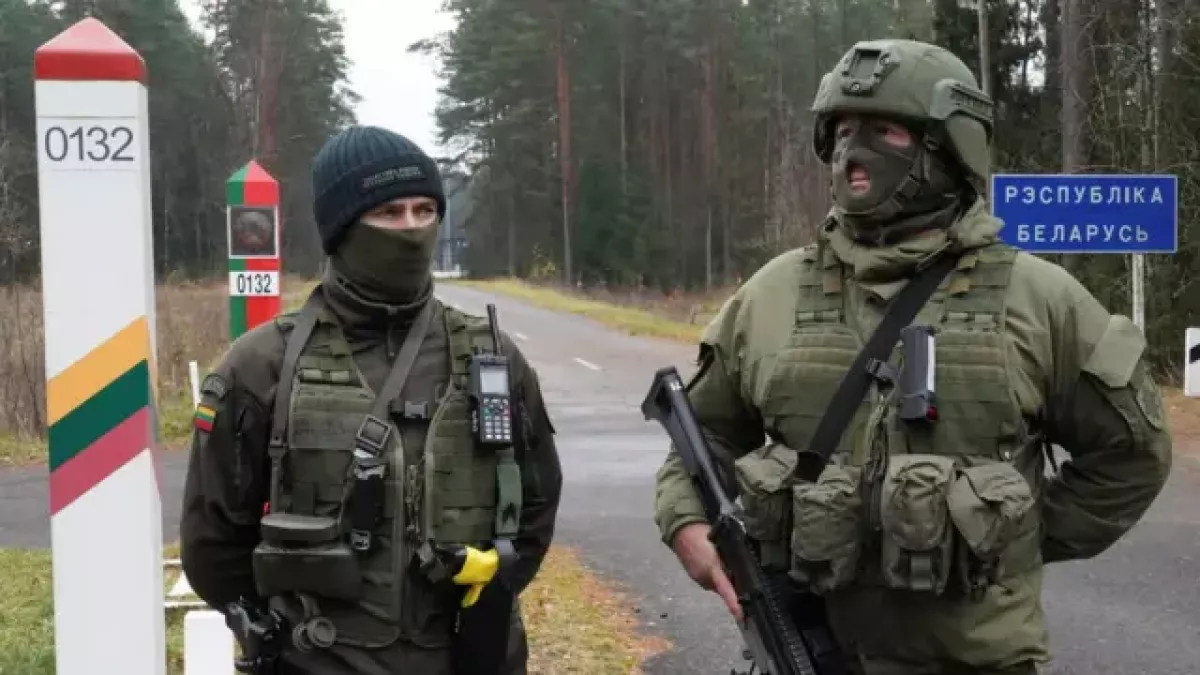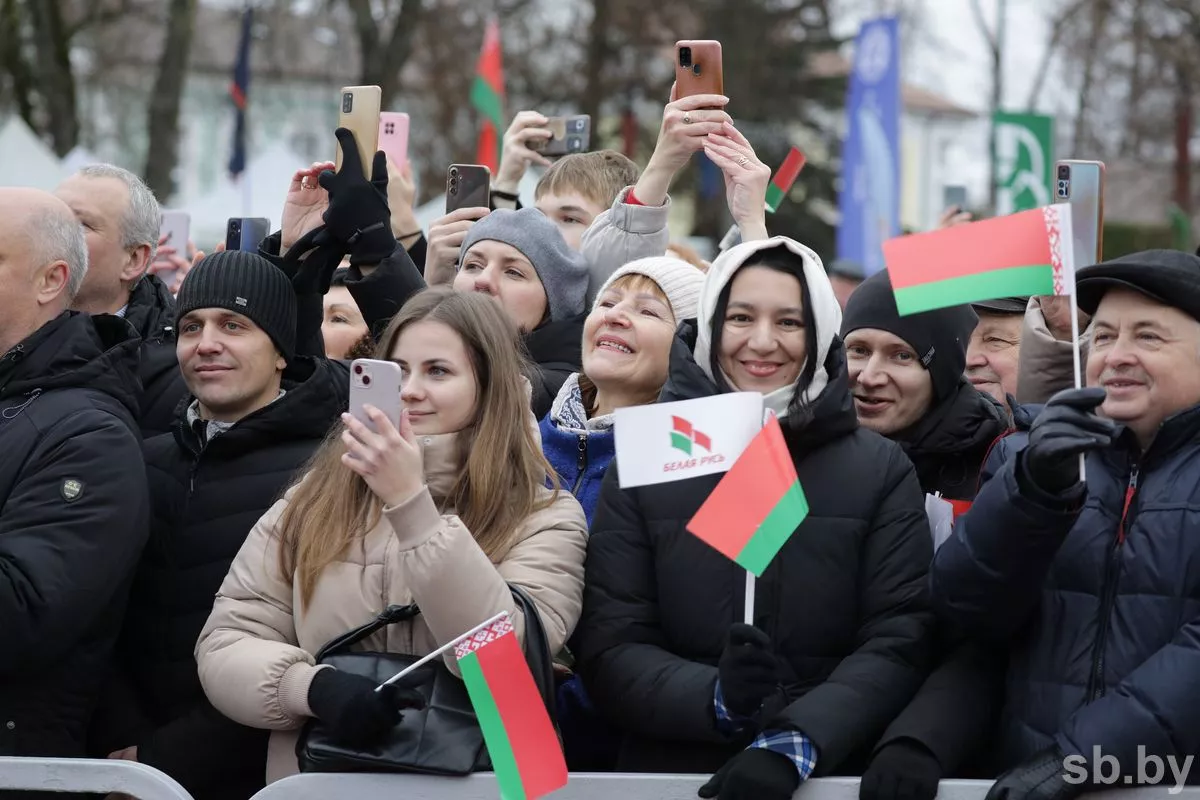Why does the EU need an "iron fist" at the border with Belarus? Caliber.Az from Minsk
Who is Belarus threatening? And why is the European Union surrounding the peaceful republic with minefields and building up a strike group on its borders?
In these turbulent times, the Republic of Belarus remains an island of peace and stability in the stormy ocean of geopolitical conflicts and contradictions. However, it seems that not everyone is pleased with this, as European countries have long been conducting large-scale military preparations on the Belarusian front.
Landmines instead of oil
At Belarus's western borders, militarization is rapidly intensifying. The level of military buildup here has not been seen since World War II. Most recently, Warsaw announced plans to deploy one million (!) antipersonnel landmines on the border with Belarus. To do so, Poland intends to withdraw from the international agreement that limits the use of this deadly weapon. On March 22, the Lithuanian Ministry of Defense also reported similar plans. At a meeting of the defense ministers of the Baltic states, a decision was made to potentially construct fortified areas along the borders of Belarus and Russia with antipersonnel and antitank minefields. The European Union will finance these activities. This is not a coincidence. The EU has a direct interest in, and is essentially commissioning, the military escalation on the Belarusian border.
Antipersonnel mines are dangerous because their victims are not only military personnel but also civilians, domestic and wild animals. Furthermore, minefields can pose a threat for decades. The situation in Azerbaijan's Karabakh, where Armenian occupiers laid numerous mines, is a clear example of this. Additionally, further questions arose among the Polish public when it was revealed that Polish military forces had lost 240 antipersonnel mines, which were recently found in a warehouse at IKEA.

Poland, the largest neighboring state to Belarus in the west, has been rapidly rearming its military in recent years. In 2024, Poland spent 4.2% of its GDP on defense, more than double NATO's 2% standard, making it the largest defense budget in modern Polish history. In 2025, the defense budget is set to increase to 4.7% of GDP, with the introduction of a special "military tax," despite 52.7% of Poles opposing it, according to UCE Research. Warsaw’s declared goal is to make the Polish army one of the strongest in Europe. Today, up to 50% of the military budget is spent on modernization and rearmament, putting Poland in first place in NATO in this regard.
By 2026, Poland's ground forces are expected to receive 250 of the latest American M1A2 SEPv3 Abrams tanks, with 28 already arriving in Poland two months ago. Additionally, 116 M1A1 Abrams tanks are currently deployed with the 18th mechanized division. A contract has also been signed with South Korea for the delivery of 1,000 5th-generation K2 "Black Panther" tanks, with the first units already arriving in the 16th mechanized division since 2022. Poland is also purchasing 672 South Korean K9A1 self-propelled howitzers, Polish KRAB self-propelled howitzers, BORSUK armored personnel carriers, and ŻMIJA reconnaissance vehicles. By 2026, the production of K9 self-propelled howitzers will be established in Poland itself.
Poland's naval fleet will be supplemented with new MIECZNIK and KORMORAN-class ships, as well as ORKA-class submarines. In August of last year, the Polish Air Force received its first 5th-generation F-35 multi-role fighter jet from an order of 32. A contract has also been signed for 96 advanced AH-64E Apache attack helicopters. FA-50 fighter jets and BLACK HAWK helicopters are already stationed in Poland. Additionally, two Saab 340 AEW&C long-range radar reconnaissance aircraft were purchased from Sweden. For the first time in Poland's history, the Wisla missile defense system, Narew air defense systems, and the Patriot missile defense system with the IBCS are providing ballistic missile interception capabilities.
In 2013, the Polish Armed Forces had 120,000 personnel. By 2024, this number had increased to 206,000. In the near future, plans are in place to expand the army to 300,000 soldiers. Since 2018, the number of units in the ground forces has doubled, from 3 to 6 mechanized divisions. Additionally, two brigades have been formed: airborne and air cavalry. Most of these units, including the newly formed 18th Mechanized "Iron Division," the 1st Infantry Division, and the 8th Infantry Division "Home Army," along with the 16th Mechanized Pomeranian Division, are stationed along the borders with Belarus and Russia. The latest weapon systems are being deployed to these very units.
Poland has also passed a law on "voluntary compulsory military service," under which the male population will undergo 28 days of basic training and 11 months of specialized military preparation. There is also an intensified recruitment campaign aimed at attracting young people to serve in the military under contract. The direction of possible military actions is not being hidden: "We intend to develop existing units in the eastern part of Poland to such a level that they will guarantee high combat readiness." Recently, the Ministry of Defense also announced that all civilian airports will be repurposed for use by military aviation.

In Polish society, expectations of an imminent war are intensifying. Recently, the Ministry of Internal Affairs urged Poles to prepare autonomous food supplies for three days. There is constant talk of the threat of an invasion from Russia, but the majority of the armed grouping being formed along the eastern borders is focused on Belarus. The militarization is also being ramped up in the Baltic States. Lithuania's defense budget in 2024 reached 2.75% of GDP, doubling since 2020. Lithuanian mechanized brigades "Aukštaitija," "Iron Wolf," and "Žemaitija" are rapidly undergoing rearmament and modernization. Starting in 2026, Lithuania will implement mandatory universal conscription.
An unprecedented buildup of NATO's strike forces is also occurring in Lithuania, with the German Bundeswehr playing a leading role since 2017. Earlier, a rotating forward combat group made up of the 41st Panzer Grenadier Brigade "Western Pomerania" and the 21st "Lipperland" Brigade was deployed, with its headquarters in Rukla. This group has now been replaced by the newly formed 42nd "Lithuanian" Tank Brigade, which will be stationed in Lithuania on a permanent basis. The German brigade will be equipped with Leopard 2A tanks (likely the latest 7th series) and the newest version of the Puma VJTF infantry fighting vehicle. This decision to permanently station German forces abroad, for the first time since 1945, is being called in Germany "a flagship project, a turning point." The combat group being established here is planned for potential military actions on the territory of Belarus and Russia's Kaliningrad region. During the Griffin Storm 2023 exercises, the German 42nd Tank Brigade was deployed to the Pabradė training ground — right on the border with Belarus.

At the end of 2023, Lithuania made the decision to shift its industry (or what remains of it) to produce dual-use products, both civilian and military. The country is preparing not only its military but also its entire society for war. Various courses and seminars on "civil resistance" are being held, involving public servants and even children's training camps. These programs actively engage EU-funded Lithuanian NGOs.
The Belarusian opposition emigration, with its leaders and offices in Warsaw and Vilnius, also periodically makes bellicose statements. Belarusian nationalists have repeatedly called on Belarusians to join the "underground" and form "partisan units." In exile, there is an extremist organization called "BYPOL," created by fugitive Belarusian security officials. Its representatives claim that ten "banners" of the "Commonwealth Uprising" have already been formed in Poland and Lithuania, ready for armed struggle. The militants of this formation undergo firearms and tactical training and possess combat weapons. The activities of these extremists are coordinated by the so-called "United Transitional Cabinet" of exiled opposition leader Sviatlana Tsikhanouskaya.
False alarm
So, is Belarus really a threat to Europe? According to the Polish Ministry of Defence, Belarus has already launched a "hybrid attack" on Poland. This is how propaganda describes the migrant crisis that occurred at the Polish-Belarusian border in 2021. However, the issue of illegal migration in the EU was not created by Alexander Lukashenko. It has been shaped over many years by Brussels' policies, the criminal syndicates smuggling people within the EU, and, most importantly, the practice of neoliberal capitalism, which relies on cheap labour or a reserve army of unemployed people.
Today, there is active infiltration of "illegals" into Poland — but only through the western borders. Recently, at the Polish-German border crossing in Görlitz-Żórawki, radical Polish nationalists once again demanded an end to the transfer of migrants from Germany to Poland. Yet neither the EU nor the Polish government labels this as "hybrid warfare." Nevertheless, under the pretext of combating illegal migration, up to 17,000 military personnel were deployed to the Belarusian border as part of Operation "Safe Podlasie." The construction of defensive fortifications (which are supposed to protect against refugees?) and military roads continues at full speed.
Meanwhile, the migrant crisis has long passed, but the building of fortifications is still ramping up. According to the Polish Ministry of Defence website: "In June 2024, the Council of Ministers adopted a decree to create the 'National Programme of Deterrence and Defence – Eastern Shield.' The government intends to create comprehensive defensive infrastructure on NATO’s eastern flank to counter threats from Belarus and Russia."
In Belarus, no one is thinking about or preparing for war. Currently, the core of the Belarusian Ground Forces consists of four mechanized brigades and three special operations forces (SOF) brigades. For comparison, Polish mechanized divisions are composed of three to four brigades. In fact, the 18th "Iron Division" alone has as many mechanized and infantry brigades as the entire Belarusian army. The 15 mechanized and airborne brigades from just four Polish divisions face only seven similar brigades from the Belarusian Armed Forces. This doesn't even take into account at least six brigades from the 1st Infantry Division of the Legions and the 8th Infantry Division of the "Home Army," which are in the process of formation, the 42nd Tank Brigade of the Bundeswehr in Lithuania, and the armies of the Baltic states. So, what "attack" from Belarus on EU countries could possibly be referred to here?

At the same time, no new units have been created in the Belarusian Armed Forces, and no existing units have moved from their previous locations. Unlike the eccentric deployment of Polish forces, mostly positioned far to the east, only three out of seven Belarusian units are stationed in the western regions of Belarus: the 6th Mechanized Brigade (Grodno), the 11th Mechanized Brigade (Slonim), and the 38th Airborne Brigade (Brest). There are also no field fortifications, ammunition and fuel depots, or access routes for equipment and personnel in the border areas.
Belarus regularly invites Western observers to its military exercises. However, recently, the Polish side refused Belarus’s offer for a military inspection of the border areas in accordance with international norms. NATO maneuvers, however, are taking place with alarming frequency near the borders of Belarus. In 2024 alone, the North Atlantic Alliance conducted over 20 exercises in territories adjacent to Belarus, which have been almost continuous. This includes Steadfast Defender-24 (with 100,000 military personnel from 32 countries), the largest NATO exercise near Belarus's borders in the past 30 years.
The leadership of the Republic of Belarus has consistently declared its peaceful intentions towards all of its neighbors, advocating for the immediate cessation of the armed conflict in Ukraine and the ending of bloodshed between brotherly nations. However, it seems that it is precisely this orientation of Minsk towards de-escalation of military tensions, as well as President Alexander Lukashenko's focus on independence and sovereignty, that does not sit well with the globalist forces in the West.
Historically, this region has seen a variety of events unfold. However, there has never been hatred or enmity between the Belarusian, Polish, and Lithuanian peoples. Both Belarus and its western neighbors lie on the strategic East-West route, and this area has often been the site of various conflicts. It seems that similar processes are now being set in motion once again…








